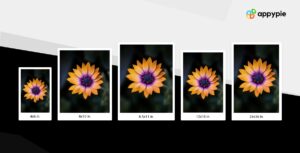A Guide to Common Aspect Ratios, Image Sizes, and Photograph Sizes

What is the perfect size for your image or video? In this article, we cataloged everyday things. With the listed aspect ratios, you can create your projects.
The exact position of a picture or video depends on broadness and height. With the help of two numbers separated, you will recognize the colon in any format. For example, a 6 inches image is a position for a 6×4 inch image. It has a perfect positional ratio of 3:3 as long as a 1920×1080 pixel video has a position ratio of 16:9.
The image position aspect will be different. It will be changed depending on the medium in which it is conferred. The positional ratio of the image shown on a computer is another form of the positional ratio of that same image displayed on the phone.
The positional ratios are an intricate part of web content because the image was uploaded at different positions like desktop vs. mobile Or blog vs. social media. Using the correct position ensures your pictures are shown as calculated without stretching or damaging them.
Common Position Ratios Used for different Images and Photos
While standard ratios make sense for most pictures, they may not work well for your photography. For example, you may be working on a panoramic image. In this case, you can use the golden ratio to help frame the image. Or you may be working on an image of a person from head to toe. In this case, you could use the rule of thirds to help determine what parts to include in the image. Hence, it is essential to understand how the position of the image's subject changes the photo's look. There are different ratios in which images and photos can be taken. These are the common ones that are used:
1.1 Ratio: It defines the image's broadness and equal heights, creating a square. There are some everyday 1.1-inch 8×8 inch ratio photos. A 1080× 1080 pixel image or typically profit, a 1080× 1080 pixel image, or commonly any profile image template of a social media site(think Facebook looks similar. These aspects are generally used for photographs, mobile screens, and social media platforms, but this is not a pattern for most TV or digital formats.
3.2 Ratio: This 3.2 ratio has its roots in 35-millimeter film and photography, and this ratio is still commonly used for a print and measuring for size. The images are precisely framed at 720 pixels for 6 x4 inches which perfectly fits this aspect ratio.
4.3 Ratio: These 4.3 ratios are used for TV screens, computer monitors, and digital cameras. For every four units, there are three units of height, making the shape of a rectangle. The image size will be 1024 × 768 pixels or 8× 6 inches set for a typical 4:3 ratio.
16:9 Ratio: This 16:9 ratio usually shows the presentation slides, computer monitors, or large-screen TVs. It is made as an international standard which recently changed the 4:3 ratio for monitors and TV screens, making it more of an expanded shape of rectangular 4:3 format. Typically the resolutions are in the ratio 16:9, equal to 1920 × 1080 and 1280 × 720 pixels.

How to Measure Image Sizes?
The positional ratios and image size determine an image's exact height in pixels and dimension in any unit. Still, it mostly shows up in pixels used for web images for digital photos and inches used for print and pictures.
This is important because it is the formula to gain two different pictures to look similar. The broadness ratio may not resemble the exact image size at 1920× 1080 pixels. It is in a positional balance of 16:9 and picture length at 1280 ×720 pixels which is in the ratio of 16.9.
Guidelines on Standard Image Sizes for the Web
Designers and online marketers have been arguing over what is the ideal file size for an image you upload to your website or blog, ever since such tools as HTML was created. More often than not, people would just guess how large an image should be based on an estimate of users’ screen resolution.

Hence, picture formatting at the server grows in popularity every day. At the time of uploading images on the web, it's essential to understand image size because if the image is in the proper size, it's easier to bend and fill fixed dimensions.
Here are the most common Image Sizes on the Web:
1920×1080pixels: It is a classy image size primarily seen across high-definition TV and social presentations. Media cover picture. It follows the 16:9 position ratio.
1280×720 pixels: This size supports HD formats displayed in photography and films. It is the 4:3 position ratio.
1080×1080 pixels: This is shown in the 1.1 ratio image size, used mainly across social media, namely Instagram and Facebook posts.
A guide on General Photograph Sizes
Suppose you are willing to print an image or design but need help displaying the right size to use. If you want to print the image in any size, this will help you avail several options. If the size is different, it will work in different environments, screens, more comprehensive prints, or posters that come with the attention of events or services. Moreover, it gives tinier prints for screens indoors or on counter space.
Printed pictures are mostly calculated in the form of inches. However, you will see centimeters used in a few countries. Printed pictures and images are primarily calculated in the form of inches. However, you need to see the centimeters used in a few countries.
Note: If you want to draw an image, you need proportions, picture length, and mattress length. The mattress is a border around the image which extends to the frame. Therefore, you should know the opening size if you want to frame a photo.
Here are a few Common Photographic Sizes or Areas:
A number of different-sized photographic prints are used in the various areas of photography. It is helpful to know the standard sizes and their uses so that you can select the correct size for your intended end result.

(4×6/5×7 Inch): This is the appropriate size, standard picture size, generally for screening photography or turner artwork.
(8×10 Inch): The above size is famous for photography and is shared between copies and more comprehensive artwork prints.
(8.5×11 Inch): Go for this standard flyer size for breaks displayed in the area. It also has minimum space, which is not noticeable in wider poster sizes. The flyer size still aims to alert others in tinier settings.
(12x18/18×24 Inch): Bigger sizes. These standard poster sizes are perfect for its users in designing events or breaks that need to go on average traffic.
(24×36 Inch): This size uses advertisement to make poster sizes for outdoor and named display cases beside massive audience places.
Conclusion
A common mistake made by amateurs is to use an aspect ratio that is greater than the final size of the image. Aspect ratios and sizes are fixed, and if you don’t conform to them, your images will not look their best or they will not fit your desired frame or space. The above guide will help you understand the Common Aspect Ratios, Image, and Photograph Sizes. Pro tip: Pick the accurate size ratio to boost your image.
Related Articles
- The Different Events on Roblox
- Best Landing Page Builder Software in 2023
- The Next Leap in AI: Exploring Innovations in Large Language Model Training
- Marketing vs Branding: Knowing the Difference and Maximizing Business Impact
- A Comprehensive Guide To App Clips
- How to Get Buzz Cut Filter on Instagram
- How to Blur a Photo: Techniques & Tips
- How to Effectively Use Notion as a To-Do List: A Comprehensive Guide
- 15 Best Event Management Software or Platforms in 2024
- Figma Alternatives for A Strong Design Strategy & Performance








